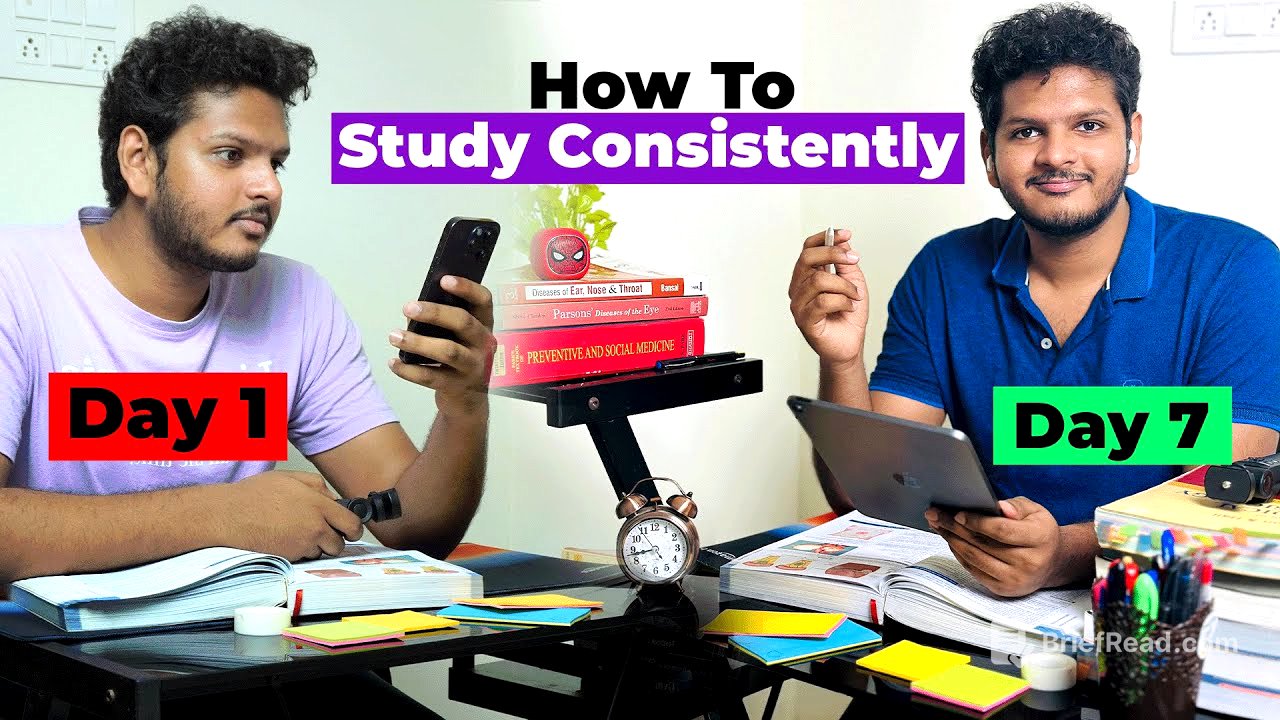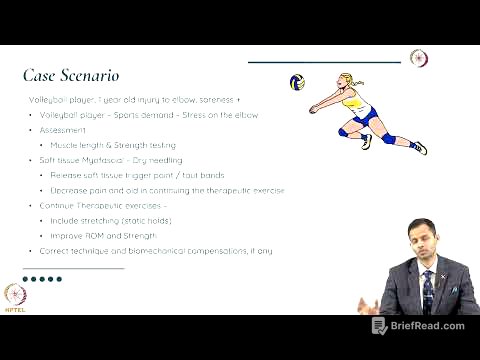TLDR;
This video provides ten practical tips to help students study more consistently and maintain motivation, particularly for competitive exams like NEET PG. The advice ranges from visualization techniques and creating structured study plans to optimizing study environments and incorporating fun into the learning process. Key takeaways include the importance of setting clear goals, breaking down large tasks into smaller steps, and regularly testing oneself to identify weak areas.
- Visualize goals by writing them down and placing them where they can be seen daily.
- Break down subjects into smaller, manageable topics.
- Create a dedicated and ergonomic study environment.
- Incorporate regular testing to identify weak points.
- Take productive breaks to avoid burnout.
Intro [0:00]
The video introduces practical tips for consistent studying applicable to various exams, drawing from the speaker's experiences as an MBBS student with distinctions and gold medals. The speaker outlines how to maintain consistency despite distractions, promising ten actionable steps to help viewers achieve their academic goals.
Visualization [0:50]
The first step involves writing down your goal on paper and placing it where you can see it every day. The speaker shares a personal example of having their NEET PG goal and desired rank visible upon waking up. This constant reminder helps maintain focus and direction throughout the day, reinforcing the purpose of studying and motivating consistent effort.
Split [2:05]
The second tip involves breaking down the exam syllabus into a list of subjects, prioritized according to personal preference or importance. For NEET PG, this means listing all 19 subjects and further dividing them into subtopics. This approach makes the exam seem less daunting by creating smaller, achievable steps, such as completing a qBank of microbiology or revising parasitology.
Ergonomics [3:24]
The third tip emphasizes the importance of finding a good study environment that promotes consistency. Ergonomics, the interaction between a person and their environment, plays a crucial role. The speaker advises finding a comfortable space with necessary setups like power outlets and wall space for notes. If a suitable place isn't available at home, college libraries or study rooms can serve as alternatives, providing a dedicated and conducive study environment.
Study [6:03]
The fourth and most challenging tip is to simply sit down and start studying. Overcoming inertia, the tendency to remain at rest, is the biggest hurdle. The speaker suggests setting a timer for just five minutes to break this inertia. Once started, motivation often kicks in, leading to productive study sessions. The Pomodoro method, using a timer to study in focused intervals, is also recommended.
Schedule [7:41]
The fifth tip involves using a calendar to track study progress and internship schedules. Marking days to indicate whether they were productive or wasted helps maintain a sense of urgency and motivation. This visual representation of time left before the exam reinforces the importance of consistent effort.
Routine [8:22]
The sixth tip stresses the importance of having a routine, even with a demanding internship schedule. The speaker shares their routine of studying in the morning, attending postings, and continuing to study after dinner. Dividing time into morning, afternoon, evening, and night slots allows for consistent study hours while accommodating other responsibilities.
Testing [10:42]
The seventh tip highlights the necessity of giving tests to analyze weak points. Regular testing is as important as studying because it helps measure progress and identify areas needing more attention. Weekly or daily tests, including solving question banks, provide valuable feedback and allow for adjusting study plans accordingly.
Breaks [11:46]
The eighth tip focuses on taking productive breaks that help the mind relax without draining energy. Instead of scrolling through social media, the speaker suggests meditating, staying away from technology, playing the guitar, or talking to friends and family. These activities provide a mental break and help rejuvenate focus for further study.
Fun [12:48]
The ninth tip encourages having fun with the studying process. Connecting the material to real-life applications, such as how it will help in treating patients, can make studying more enjoyable and efficient. Using resources like SketchyMicro, SketchyPharm, Pathoma, or even ChatGPT to make learning more engaging is also suggested.
MUST DO! [13:45]
The final tip is a call to action to subscribe to the channel for more high-quality videos on increasing scores and productivity.





![This Crypto Crash Will NOT End Here! [Here's Why]](https://wm-img.halpindev.com/p-briefread_c-10_b-10/urlb/aHR0cDovL2ltZy55b3V0dWJlLmNvbS92aS9EbUdyNzlUemp4TS9ocWRlZmF1bHQuanBn.jpg)



